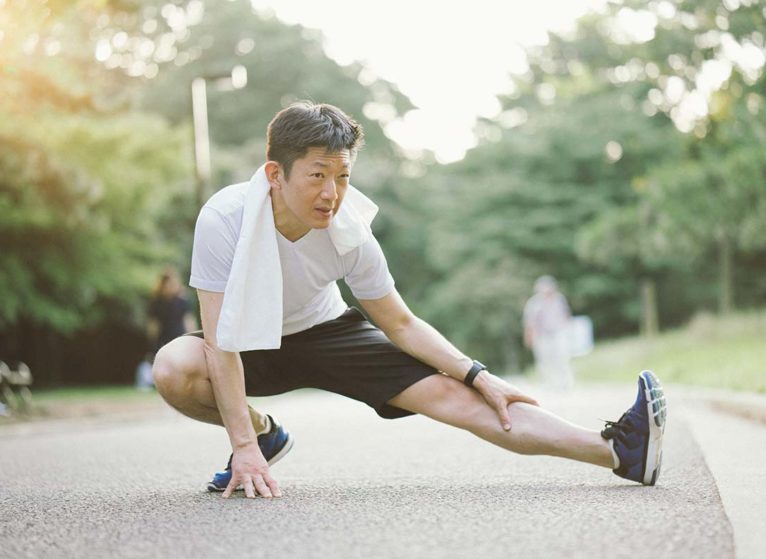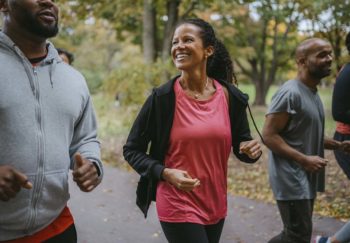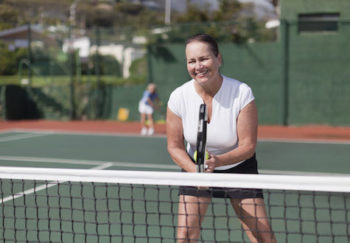As the summer heats up and COVID-19 restrictions are being lifted, more and more adults are getting back in shape and playing team sports. But overdoing it after a period of inactivity can lead to injury.
I recently spoke with orthopedic surgeon Stephen Brockmeier, MD, to answer your questions about:
- Getting back in shape safely
- How to prevent and detect an exercise injury
See Dr. Brockmeier's answers below.
Avoiding Injury When Getting Back in Shape
What are the risks of rushing to get back in shape after a long period of inactivity?
When we talk about injuries, one of the things we see commonly is people who dramatically increase their level of exercise. Your body’s not quite conditioned yet. You run into certain types of injuries, whether they be traumatic or from overuse, or some combination of the two.
How can these injuries be prevented – especially in middle-aged and older adults?
Number one, ramp up gradually. If it’s running, cycling, or swimming, the idea is to acclimate. Your body gets used to that activity or exercise over a period of time. By doing this, you can avoid overuse-type injuries, like stress fractures in the bone or tendinitis.
People in their 40s and 50s will commonly run into things like:
- Tennis elbow (pain or tenderness in the elbow)
- Achilles tendonitis (inflammation of the tendon above the heel)
- Stress fractures in their legs
They could be trying to do things like increasing their mileage when they’re running.
The second thing, when you’re getting ready to exercise, is to warm up. You want to hydrate well, stretch, and build up gradually.
No one stays 18 forever. The body doesn’t respond as well as when you were younger. So take time to warm up, to cool down, and to give your body some recovery time after exercise. Moderation is always good.
Listen to Your Body
And finally, the thing I normally tell my patients is to listen to your body. You can expect soreness after exercise. It kind of makes you feel good, like “I got a good workout in.”
But there’s a difference between soreness and escalating injury or escalating pain. Listen to your body when:
- Something lingers beyond the appropriate period of time
- You have to take medication to calm things down
- You feel an increasingly negative response to a specific exercise
Give yourself appropriate time to recover. Don’t promote or walk into an injury, essentially.
If we’re feeling more pain a couple of days after exercise, what should we do?
First, take a period of time to rest. Give your body the ability to repair itself.
Watch for swelling or instability, where it feels like there’s an area you can’t move into. That’s something to note and perhaps seek an evaluation with a sports medicine-trained physician.
The other thing to consider is that your body can only repair itself if it has the correct level of nutrition and building blocks. So pay attention to what you’re eating, get proper hydration, and take certain vitamins if you’re deficient. For example, vitamin D and calcium are vital to bone health as we get older.
Exercise Trends During Covid
Have you seen an increase in injuries over the past few months, as more people attempt to get back in shape?
We’re seeing an interesting ebb and flow. Early on in the pandemic, we saw a fair amount of overuse injuries. Maybe some people had anxiety and were feeling cooped up. Maybe some had a little bit more time on their hands for exercise and were more exuberant than their body could handle. So we had an uptick in patients early on.
After drifting into springtime, with the re-emergence of high school sports, we saw more injuries creep forward. And with adults getting back into more group-based activities and team sports, we’re seeing a tremendous uptick in traumatic injuries like ligament injuries in the knee, instability in the shoulder, sprained ankles, and things of that nature.
We’re scheduled to open the new UVA Orthopedic Center toward the end of this year. What services will there be for these kinds of injuries?
I’m glad you asked about that. It’s one of the most exciting things we have to look forward to, the UVA Orthopedic Center Ivy Road.
The center will offer:
- Care for fractures and joint issues, including sports injuries
- Orthopedic surgery
- Outpatient joint replacement surgery
- Radiology services
- Physical therapy
There’s really nothing like it in our state. We envision it being a flagship for orthopedic care in Virginia.


